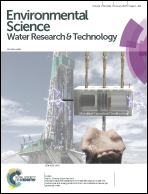Quantification of corrosion inhibitors used in the water industry for steam condensate treatment: the indirect electroanalytical sensing of morpholine and cyclohexylamine†
Abstract
Corrosion inhibitors are widely used in the water industry for steam condensate treatment. Due to their application into the food industry, the Food and Drug Administration (FDA) legislate that such inhibitors are not to exceed 10 mg L−1. Various analytical protocols exist to provide an offsite analysis and a point of site analysis is required. Consequently, the first example has been reported for the indirect electroanalytical determination of cyclohexylamine and morpholine, two important corrosion inhibitors using disposable and economical screen-printed graphite macroelectrodes. These two analytes have been demonstrated to have no measureable direct electrochemical signatures in aqueous solutions using carbon and noble metal based macroelectrodes and we propose, for the first time, an indirect electrochemical sensing protocol which utilises screen-printed graphite macroelectrodes. This indirect approach utilises an EC type-mechanism using the compounds, N,N′-(1,4-phenylene)dibenzenesulfonamide and N-(4-amino-2-methyl-phenyl)-benzenesulfonamide as mediators. In this approach the mediators are electrochemically oxidised which then chemically react with the target analytes, cyclohexylamine and morpholine; the products of these reactions are then electrochemically interrogated and provide an indirect electroanalytical signal with which to quantify cyclohexylamine and morpholine. The two mediators are required for the two analytes as one mediator cannot measure both analytes. It is demonstrated that this indirect sensing protocol allows the electroanalytical detection of cyclohexylamine and morpholine over the range 1 to 10 mg L−1 in pH 10 carbonate buffer utilising cyclic voltammetry. This indirect electroanalytical protocol is found to exhibit a limit of detection (3σ) of 0.9 and 1 mg L−1 for cyclohexylamine and morpholine respectively which are significantly below the FDA sanctioned levels. This indirect electroanalytical protocol utilising screen-printed sensors has the potential to be applied into-the-field enabling the measurement of these two neutralizing amines to ensure they do not exceed FDA guidelines.


 Please wait while we load your content...
Please wait while we load your content...